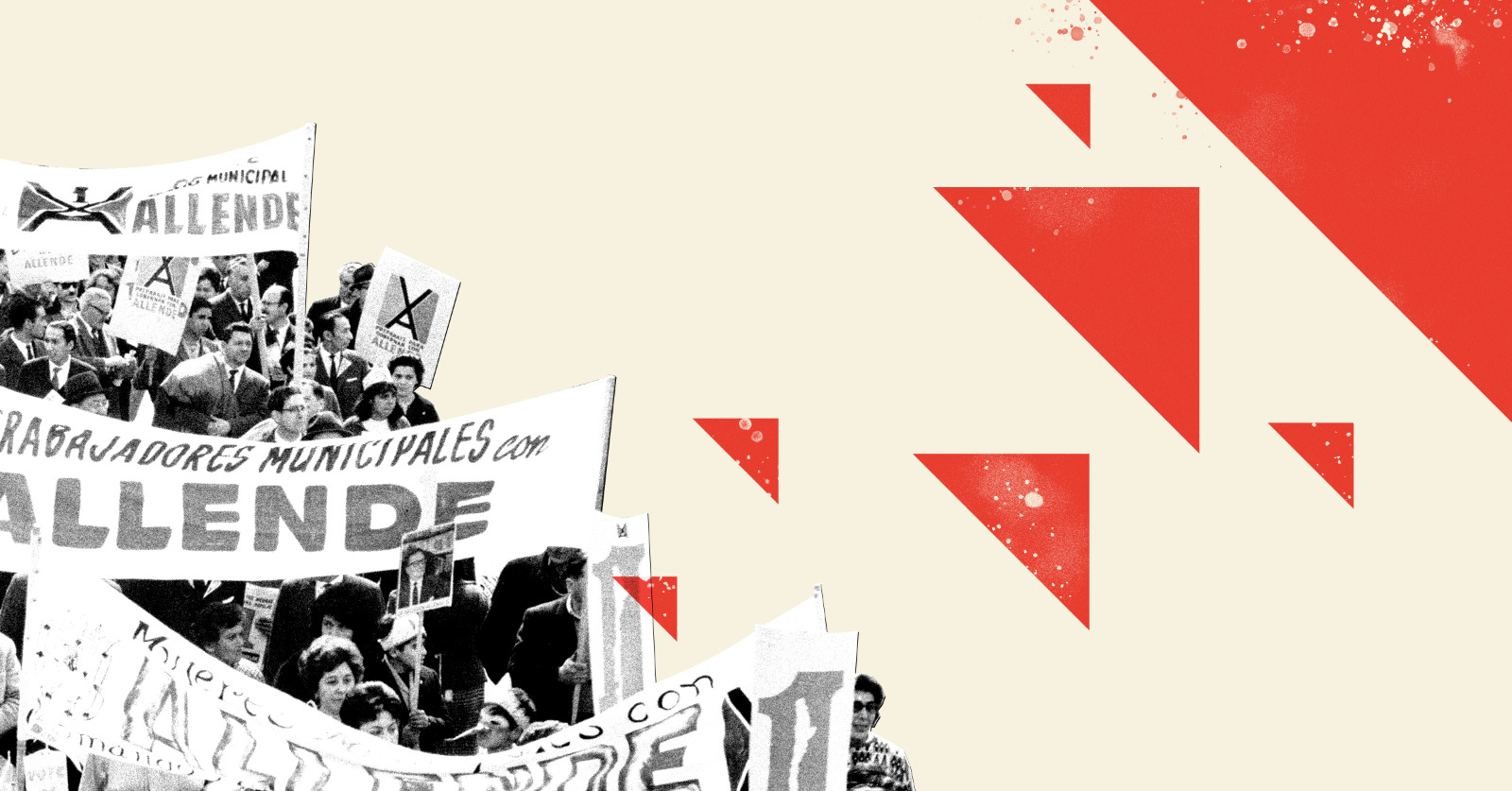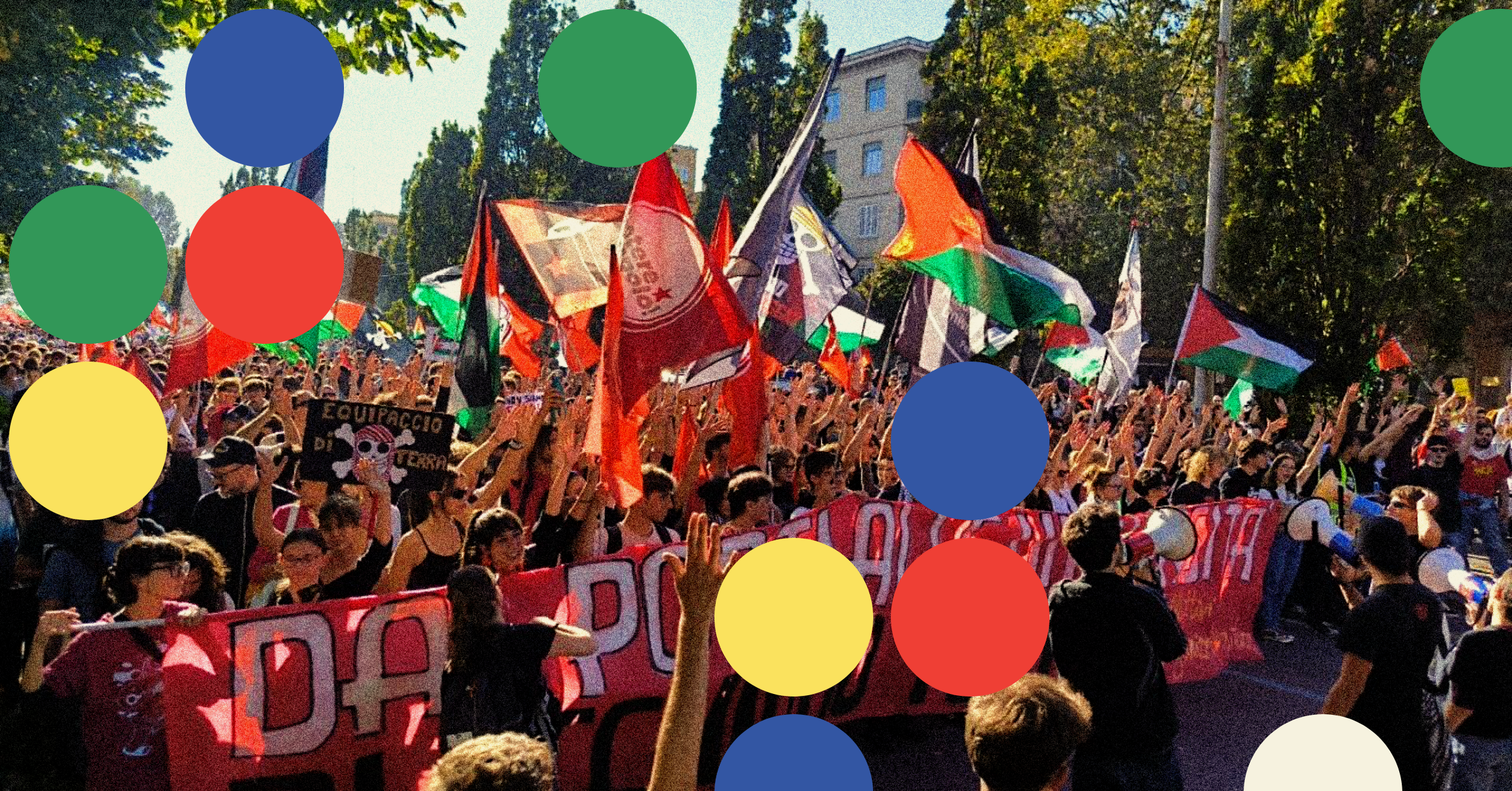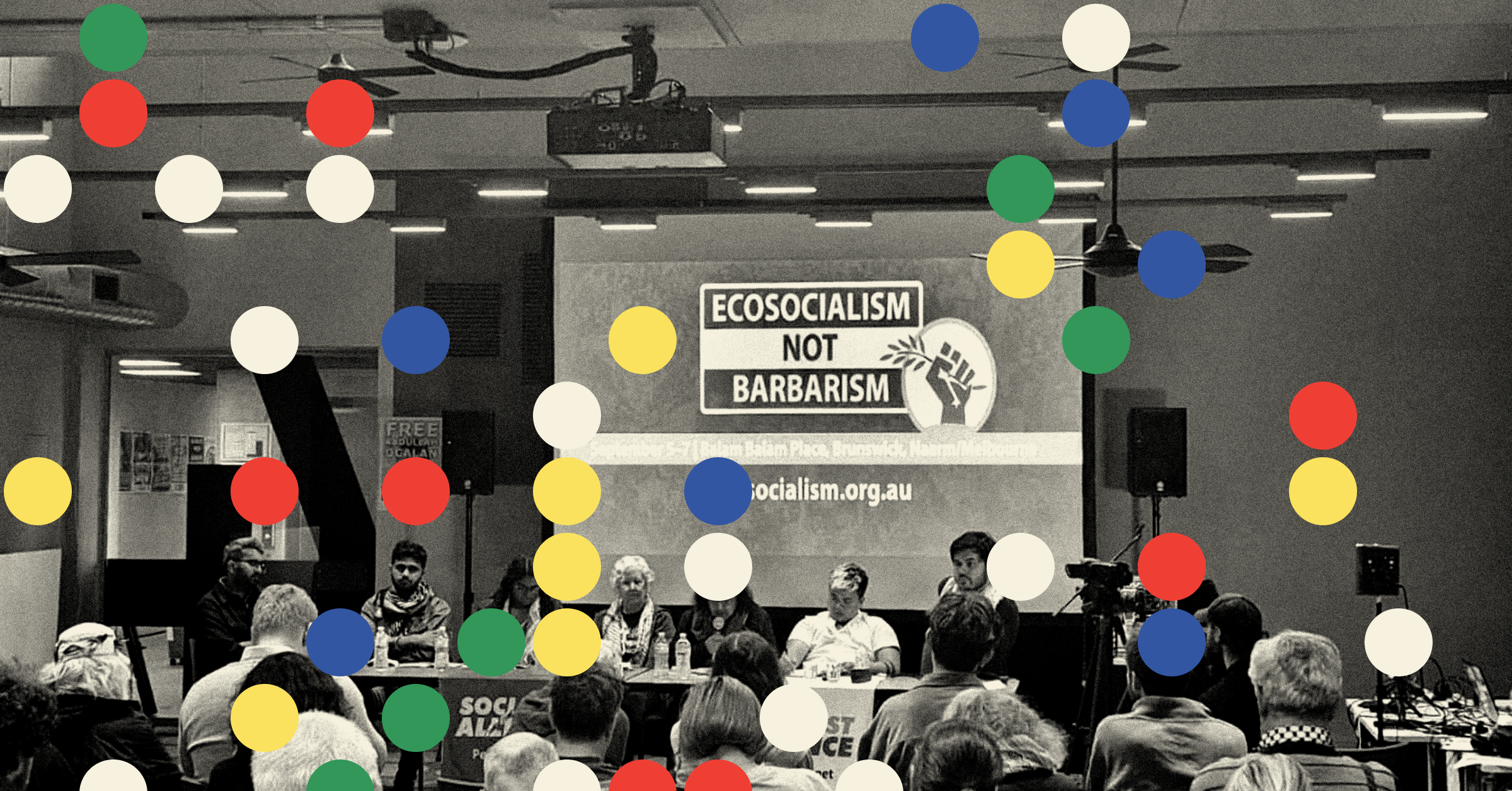On November 5th, 1970, over 60,000 supporters crowded into the national soccer stadium of Chile, Santiago’s Estadio Nacional, to see President Salvador Allende’s first speech since his inauguration earlier that week. Throughout the week, workers celebrated their movement’s victory in the streets, welcoming their compañero presidente, the first democratically-elected Marxist to the office of president in Latin America. At the Estadio Nacional, Allende pledged that over the next few years, their movement and government would build a working-class republic and initiate a transition to socialism through democratic means.
There had been prior experiences of socialist revolutions, most significantly in Russia, China, and Cuba, which took the form of popularly-backed insurrections or even guerrilla wars. But no serious attempt at socialist transformation had run through the legal democratic process of electing a government. Chile was different from these other countries, with a more advanced form of capitalism and a longstanding parliamentary tradition, which together pushed Chile’s working-class movement to try to take power through formal liberal democratic channels. Upon coming to power, the movement sought to expand democratic freedoms and bring workers into the process of managing the economy.
Allende, in his first speech to Congress following his election, declared that:
“The circumstances of Russia in 1917 and of Chile at the present time are very different. Nevertheless, the historic challenge is similar… Like Russia then, Chile now faces the need to initiate new methods of constructing a socialist society. Our revolutionary method, the pluralist method, was anticipated by the classic Marxist theorists but never before put into practice…
Today Chile is the first nation on earth to put into practice the second model of transition to a socialist society…
For my part, I am sure that we shall have the necessary energy and ability to carry on our effort and create the first socialist society built according to a democratic, pluralistic, and libertarian model.”
However, Chile’s transition to socialism was cut brutally short. Fifty years ago today a U.S.-backed military coup led by General Augusto Pinochet destroyed Chile’s socialist experiment. The military bombarded La Moneda, the presidential palace, reclaimed nationalized factories, and rounded up left-wing activists in the same Estadio Nacional in which Allende gave his 1970 speech, transforming it into a make-shift concentration camp. In the following decades, Pinochet established a military junta that crushed popular dissent, tortured, killed, and disappeared left-wing organizers, and initiated a neoliberal experiment the effects of which Chilean workers have been unable to shake off to this day.
On the 50th anniversary of the coup in Chile, we mourn the horrible consequences of the coup, the tens of thousands of lives lost, and the hopes and dreams of millions that were shattered. We also honor their legacy by studying their movement to take lessons for today. The contemporary democratic socialist movement in the United States is based on similar premises as Chile’s fifty years ago: we contest elections and participate in formal democratic institutions, recognizing them as an essential terrain of socialist struggle. Similarly, our vision of socialism is rooted in the principles of democracy, pluralism, and freedom. Though we look to other socialist revolutions and projects around the world, groups in DSA like Bread & Roses take immense inspiration from the Chilean Road to Socialism.
This article attempts to contribute to this effort, identifying four key lessons that should inform socialist struggle today. This list is by no means exhaustive but can act as a place to start in understanding Chile’s Road to Socialism, and in crafting our own road today.
1. Class Independence and Class Struggle are Key
Between 1938 and 1948, the Socialist and Communist Parties — to varying degrees at different times — participated as junior partners in center-left governments led by the middle-class Radical Party. The Communists believed that alliances with capitalists were necessary to end U.S. imperialism’s hold on Chile and carry out land reform. After achieving these tasks, according to the Communists, workers could end those class alliances and establish their own independent movement to struggle for socialism.
But the participation of left parties in these center-left governments was largely a failure. The middle-class-led governments failed to grant peasants the right to unionize or carry out land reform. And through state investment in industrialization without any power to direct how capitalists used their government subsidies, they further enriched Chile’s national capitalist class at the expense of workers.
The Socialist Party, however, recognized the failures of the Popular Front, and reoriented toward a strategy of class independence, arguing that only an independent worker-led movement could break with U.S. imperialism, carry out land reform, and effect a transition to socialism. Part of this turn involved prioritizing the long-term goal of the working-class conquest of political power over winning elections and taking administrative positions for their own sake. The Socialists sought to build a Workers Front that would unite all working-class parties in one independent electoral formation directly opposed to all — including reform-minded — capitalist forces, and to reunite a politically-fractured labor movement.
This culminated in the Popular Action Front (FRAP) in 1956, an electoral alliance between the Socialists and Communists that found great success in the 1958 presidential elections. FRAP ran Allende for president that year and nearly won, giving political expression to both a general frustration with the status quo and a 1957 upsurge in mass action in the workplace and the streets.
There were two other central parts of the Workers’ Front strategy.
First, the Socialists identified building working-class organization and consciousness as the primary goals of reform fights. But, they argued, this was only possible when those fights pitted workers directly against capitalists and when the movement refused to subordinate those objectives to the immediate winning of the reform, such as through backroom deals.
Second, the Socialist Party doubled down on its union work. They reorganized the party so that workplace and industry structures would serve as a more important form of party organization than the party’s city and neighborhood-based ones. The party also reoriented toward organizing among the rank-and-file as opposed to simply winning over labor leaders. They set out to intentionally recruit and develop the most advanced layers of the labor movement, identified key industries to expand their base in, and worked to build more open-ended strikes democratically led by workers themselves. Unions were identified as schools of socialism in which workers would learn how to democratically lead their own struggles, come to higher levels of consciousness, and prepare themselves to ultimately take over industry.
FRAP would remain the independent working-class electoral coalition through 1969, when it was reformulated into Popular Unity by integrating left-wing middle-class parties into the coalition as junior partners. But unlike the previous Popular Front alliances, these middle-class parties accepted a broad program for socialist transition led by the coalition’s working-class forces. Given the failures of the center-left Christian Democrats to resolve Chile’s structural crises, and a massive increase in strikes and peasant actions, an independent working-class electoral formation allowed Chile’s socialists to provide a real alternative to the status quo. It was this Workers Front strategy that ultimately led Chile’s workers’ movement to win the presidency in 1970, and resulted in the most exciting combination of bottom-up and state-led initiatives during the three-year socialist experiment.
2. Struggle Inside and Outside the State Can Be Linked
The Chilean Road to Socialism combined political struggles inside the state with mass organizing outside of it. These two tracks at once built on, and at times, came into conflict with each other. Maximizing the positive feedback loop of struggle inside and outside the state while navigating the tensions that emerge between the two remains a central strategic dilemma for democratic socialists today.
A prime example of this relationship was the struggle of the Yarur textile workers in achieving first an independent union, and later the nationalization of their firm, as documented by Peter Winn in Weavers of Revolution. In 1969, cadres of Socialist and Communist Party members at the Yarur textile mill initiated a campaign to throw out their company union and establish an independent one. The campaign met at local Socialist Party offices, and local student Socialists helped with distributing the campaigns newsletters. Bolstered by Allende’s Presidential campaign, one side of the newsletter made the case for an independent union while the other side connected their shop floor fight to Popular Unity’s electoral program.
Allende’s insurgent campaign, led by grassroots Popular Unity committees throughout the country further boosted the workers’ confidence. During the campaign, Allende delivered a speech before the factory’s workers stating that if he won he would nationalize the firm and turn it over to them. Following Allende’s victory, the movement quickly won their union campaign. Over the next few months, Yarur workers built more militant struggles against the boss, won greater dignity at work, removed despotic managers, and fought for control over the shop floor.
In April of Allende’s first year in office, the Popular Unity coalition won just over 50 percent of the vote in Chile’s municipal elections. This electoral victory signaled to the Yarur workers that power was within their reach, prompting them to go on strike for the nationalization of their factory. Behind Allende’s back, the worker-leaders collaborated with the left-wing Ministry of the Economy, which was headed by members of the Socialist Party’s left wing, to establish a plan and legal case for nationalization.
When the workers took action, Allende pushed back in fear that such an action would dangerously accelerate the socialist project past his carefully controlled state-led process. The workers disregarded their comapñero presidente and successfully pressured the government into nationalizing the factory, dramatically speeding up the revolutionary process in Chile.
Similarly in the countryside, peasants took land reform into their own hands, organizing mass land seizures, and received state funding to establish cooperatives to produce food for the country. But here too, peasant radicals often came into conflict with the Allende government who were constrained by a legal system that mandated a much slower pace led by the government than what peasants or workers hoped for.
In the face of lockouts and hoarding, workers established organs of “poder popular,” popular power, to coordinate production and distribution. The state coordinated with the new grassroots institutions. But as before, sections of the government viewed them with some skepticism, believing it was premature to carry out a rupture with capitalism and fearing civil war. In response to increasingly violent reaction by the upper and middle classes, Allende ultimately opted to demobilize popular power institutions, integrated the military into his cabinet, and began to reverse some nationalizations.
Absent a congressional majority, it’s unclear if another strategy would have worked. The majority of Allende’s working-class base, despite becoming increasingly agitated about Allende’s reversals, remained committed to his general set of tactics, rejecting calls by left groups outside the government to raise up arms and prepare for the by then inevitable civil war. This may have been different had Allende and Popular Unity had a strategy for how to overcome capitalist reaction, but this is easier said than done. Ultimately, that failure to prepare left Chilean workers defenseless on the eve of September 11, 1973.
3. The Working Class Can Run Society
Perhaps the most inspiring feature of Chile’s democratic socialist project was that workers themselves were the protagonists. Through decades of struggle, and the process of socialist transition, Chilean workers transformed themselves into a social force capable of running society. At the ex-Yarur factory (so called by the workers after they took control from the Yarur family), and throughout the country, workers pioneered self-management, created a more democratic and free workplace, and unleashed their creative capacities, which had been previously constrained by managerial rule. At the ex-Yarur factory, for example, workers innovated a new air ventilation system, began to manufacture spare parts in their maintenance shop to decrease their reliance on foreign imports, and helped other workers in their area organize to convince the government to nationalize their firms and establish their own democratic management structures.
During the height of the 1972 business offensive, workers reopened factories they were locked out of and began to coordinate production and distribution themselves, using their own ingenuity and support from the government to ensure society continued to function. Workers throughout Chile discussed and debated the course of the revolution. Those in nationalized firms analyzed the limits of nationalization and successfully pushed for expanding the participation of workers in the management of their firms and the economy as a whole.
Throughout Chile, workers saw themselves as the force capable of defending the government, and understood their historic task in achieving socialism and winning their own freedom. Toward the end of Part III of Patricio Guzmán’s epic The Battle of Chile, a worker is interviewed who, following his work week, volunteered at the local people’s store, one of the popular power initiatives responding to shopkeeper hoarding that directly supplied workers with goods. In an impassioned yet stoic response, he stated:
“I’m going to defend our government because we know that it’s the people’s government and we have to defend it. So that’s why I say that I’m not afraid because I’ve made my mind up. And I said to my wife, ‘You’ve got two children, they’re grown up. You’ll finish rearing them and if I have to die for some reason, I want to die defending our cause, as a worker, because we’ve been exploited all our lives.'”
Working-class mass action was not simply a battering ram used by the government when it saw fit, but its own living, breathing movement. When government or union officials urged moderation, many worker and peasant activists pushed back, demanding that officials fulfill their role as representatives of the working-class. The political awareness, strategic clarity, and heroic commitment of the rank-and-file of the workers movement were the fundamental engines of Chile’s attempted democratic socialist transformation.
4. Capitalist Reaction is Inevitable
Propertied classes and imperialist powers should not be expected to peacefully allow their power and privileges to be taken from them simply because they lose an election, nor did they in Chile. In response to Allende’s victory and the advances of the grassroots movement and Allende’s government, capitalists engaged in a capital strike and flight, locked workers out of their factories, and hoarded goods. Fascist militias — supported by business and the U.S. government — marched in the streets, sabotaged train lines, and assassinated government officials. The U.S. government directly funded clandestine efforts against the Allende government and waged an economic war that made it difficult for the country to export its copper and receive international loans. In Allende’s first year, international investment plummeted.
This response was the inevitable reaction of the ruling class to the initiation of a socialist program. Wage increases, price controls, redistribution, nationalizations, and land reform all created an unprofitable investment environment. Simply by pulling out investment, capitalists wreaked havoc on the Chilean economy. Middle-class shopkeepers joined in the fight by hoarding goods to seek a higher profit on the black market, together contributing to rampant inflation.
The Allende government sought to expand public ownership of industry to keep both wages and investments high by operating firms at a lower profit margin than would be accepted by private capitalists. But absent the willingness to ignore the will of the capitalist-controlled legislature and judiciary, and effectively initiate a revolution and likely a civil war, there was only so much a small portion of the economy under public ownership could do. And the business onslaught only intensified following the expansion of Popular Unity’s support in the 1973 congressional elections.
Chile’s right-wing majority in congress began to impeach and remove Allende’s ministers. It also declined to raise revenue to fund government programs already passed, forcing the government to print money and exacerbated inflation. Fascist violence grew, prompting Allende to empower the military to establish law and order. But instead of reigning in Chile’s violent far-right, the military used their newfound powers to search and seize weapons to target and harass workers and left-wing activists, most of whom had no weapons to begin with. As the crises imposed on Chile reached their crescendo, and Allende sought to hold a plebiscite so that the Chilean people could resolve the impasse between the executive and legislature, the military intervened and put an end to the young workers’ government.
The official line from the ideologues of capitalism is that socialism violates fundamental liberal democratic freedoms and therefore must be resisted at all costs. But the capitalist ideologues conflate violations of democratic freedoms and violations of capitalist property rights, which they view as integrally connected. If anything, they value the latter far more than the former, supporting fascist violence and military dictatorships to maintain the rule of the market and private property.
Henry Kissinger wrote in a confidential memo to President Nixon that the Allende government posed a “mortal threat to the U.S.” because the “example of a successful elected Marxist government” would set an “insidious model effect” to the rest of the world. To Kissinger, the danger posed by the Allende government was not due to Allende’s abrogation of democratic freedoms, but rather his commitment to them.
That commitment is something to be admired and to learn from. We should also be sober in recognizing that no matter how strong our commitment to democracy, if we are to gain power here in the United States, as Chile’s left did fifty-three years ago, we should expect quite a similar playbook on the part of our own ruling class.
* * *
We have much to learn from Chile’s working-class movement, their dreams and ambitions, their failures and losses. We mourn them today and the world they sought to achieve: one free of exploitation and oppression, established and built by workers in the interest of the vast majority of society. As the military assaulted La Moneda fifty years ago today, Salvador Allende broadcast his last words to the Chilean people, promising Chile’s workers that, “Sooner rather than later the great avenues will open again where free men will walk to build a better society.” We honor those Chilean workers by walking those great avenues today, fighting to build that better society.




